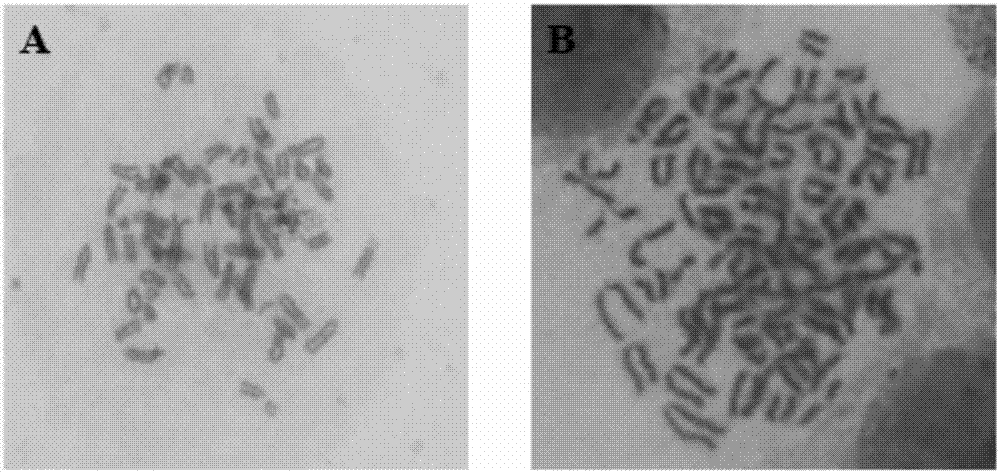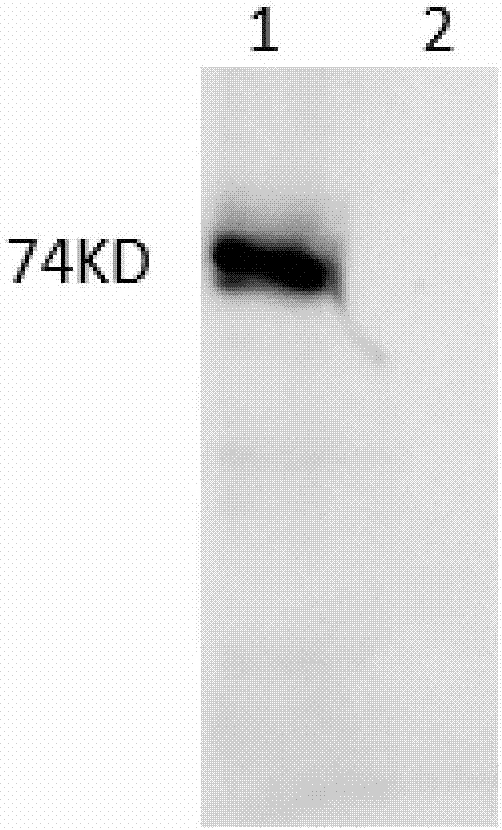Anti-Ebola virus GP protein monoclonal antibody, and applications thereof
An Ebola virus and monoclonal antibody technology, applied in the field of biological immunology, can solve the problems of no treatment method, no legal and effective vaccine for Ebola disease, etc., and achieve the effect of high specificity and sensitivity
- Summary
- Abstract
- Description
- Claims
- Application Information
AI Technical Summary
Problems solved by technology
Method used
Image
Examples
Embodiment 1
[0026] The preparation of embodiment 1 antigen
[0027] 1. PCR amplification of Ebola virus GP gene fragment
[0028] According to the Ebola virus GP gene sequence (GenBank accession number: AF086833), DNA STAR software was used to analyze the immunogenicity, hydrophilicity and surface accessibility of GP, and the results found that the hydrophilicity and antigenic index of 1-300 amino acid fragments Higher, so choose the gene sequence design primer of 1-300 amino acid, with the expression plasmid that contains whole GP gene as template, design a pair of primers (upstream primer: GCGGATCCATGGGCGTTACAGGAATATT; Downstream primer: CGAGCTCTTCATTTTTCTAGTGAGGTT;), respectively introduce BamH I and Sac I sites. The target gene sequence was obtained by PCR amplification.
[0029] The reaction system is shown in Table 1 and Table 2.
[0030] Table 1 PCR reaction system
[0031]
[0032] Table 2PCR reaction conditions
[0033]
[0034]
[0035] 2. Construction of Ebola vir...
Embodiment 2
[0041] The preparation of embodiment 2 monoclonal antibody
[0042] 1. Mice Immunization
[0043] Six 6-week-old female SPF BALB / c mice (purchased from Hubei Provincial Center for Disease Control and Prevention) were selected. Take 100 μg of the truncated GP protein immunogen prepared in Example 1, which is easily emulsified with an equal volume of complete Freund's adjuvant (purchased from sigma company), and injected subcutaneously in the back of the mouse for the first immunization. After 14d and 28d, the same dose was emulsified with an equal volume of incomplete Freund's adjuvant (purchased from sigma) for the second and third immunizations. On the 14th day after the third immunization, the mice in the immune group and the blank group were docked to collect blood, and the serum was separated, and the indirect ELISA method was used (Engvall, E. (2010). The ELISA, enzyme-linkedimmunosorbent assay. Clin Chem, 56 (2), 319-320.doi:10.1373 / clinchem.2009.12780.) Detection of m...
Embodiment 3
[0055] The genetic stability detection of embodiment 3 hybridoma cells
[0056] After the clone of the hybridoma cell line was purified, it was inoculated on a 24-well cell culture plate and cultured. When the cells grew to the logarithmic growth phase, colchicine with a final concentration of 0.4 mg / mL was added to the cell supernatant, 37°C, 5 %CO 2 Cultivate in the cell culture incubator for 3 hours; gently blow the cells with a decapitated pipette to suspend the cells, aspirate the cell suspension, and centrifuge at 1000r / min in a 4mL EP tube for 10min; add 1mL of 0.075mol / L KCl preheated at 37℃ Infiltrate the solution, gently resuspend the cells, place the cell suspension in a 37°C incubator and let it stand for 30min; add 1mL of freshly prepared fixative solution (methanol: glacial acetic acid volume ratio = 3:1), mix well, and centrifuge at 1000r / min for 10min , discard the supernatant; then add 1mL of fixative, mix gently, let stand in a 37°C incubator for 30min, cent...
PUM
 Login to View More
Login to View More Abstract
Description
Claims
Application Information
 Login to View More
Login to View More - R&D
- Intellectual Property
- Life Sciences
- Materials
- Tech Scout
- Unparalleled Data Quality
- Higher Quality Content
- 60% Fewer Hallucinations
Browse by: Latest US Patents, China's latest patents, Technical Efficacy Thesaurus, Application Domain, Technology Topic, Popular Technical Reports.
© 2025 PatSnap. All rights reserved.Legal|Privacy policy|Modern Slavery Act Transparency Statement|Sitemap|About US| Contact US: help@patsnap.com



